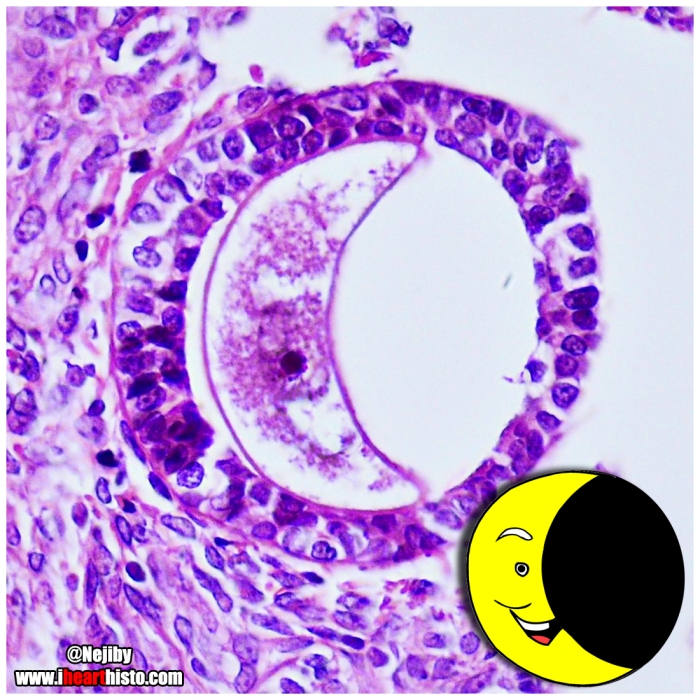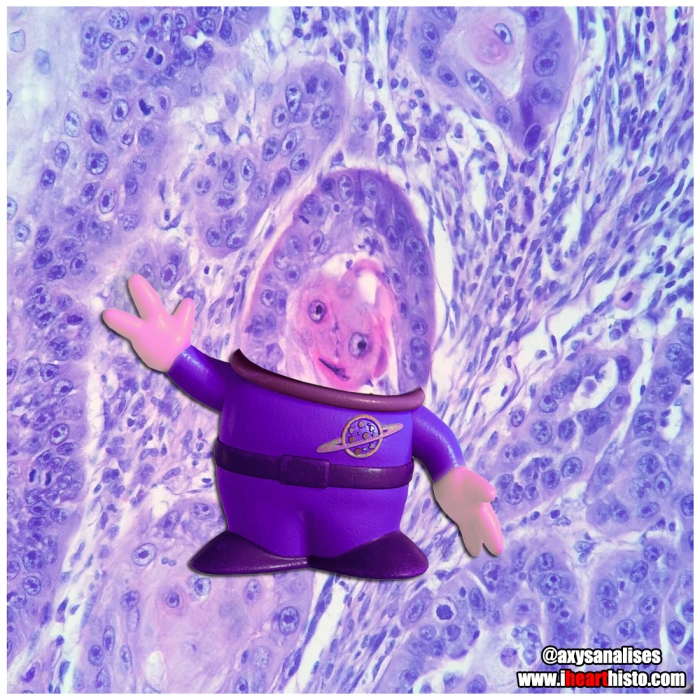Some of these slices are edible and some of these slices are just dead people.
Which would you put in your mouth and which would you put under your microscope?
As promised here are the answers to this week’s pathological dilemma.
Congratulations to everyone who avoided an embarrassing, cannibalistic faux pas at the dining table. To the rest of you – don’t be surprised if your friends suddenly find themselves “busy” when you next host a dinner party.
Fed or Dead
1. 🍴 Fed 🍴
This is red cabbage delicious pickled or in slaw.
2. 💀 Dead 💀
This is a slice through your sciatic nerve. Great for contracting your hamstrings (also not food) but not so tasty on a sandwich. The nerve is composed of the axons of many neurons all cut in half so they look like hundreds of little o’s filling the specimen. The whole nerve is surrounded by a connective tissue perineurium.
3. 💀 Dead 💀
This is a slice through the jejunum of the small intestine. Great for digestion or indigestion depending on whether you choose munch or microscope. (Although technically the outer wall of the intestines are what they use for the skin of sausages – so technically this could go both ways). You can tell it’s small intestine because all those projections are villi. They increase the surface area of the lining of your small intestine to improve its efficiency at absorbing all the nutrients from the food you eat. You can tell it is jejunum over the other regions of the small intestine because it doesn’t have Brunner’s glands (duodenum) or Peyer’s patches (ileum).
4. 💀 Dead 💀
This is an ovary. Think of a baby not a Baby Ruth. All those little ‘holes’ in this tissue are ovarian follicles at different stages of development. Each contains a tiny egg (also not food). One of these eggs will eventually be ovulated and under the right conditions* has the potential to form a real life baby (*spermatozoa required).
5. 🍴 Fed 🍴
Sweet purple potato. All the yummyness of a traditional sweet potato but with an H&E hue.
6. 💀 Dead 💀
This is a Pacinian corpuscle in the dermis of the skin. Not for pressure cooking but great for sensing pressure. They are nerve endings that are sensitive to vibration and sudden disturbances in pressure, such as when feeling a rough v smooth surface or grasping/releasing an object.
7. 🍴 Fed 🍴
This is the beet root. A staple in borscht. Warning: Eat too much and it will turn your poop red.
8. 🍴 Fed 🍴
Dragon fruit. The red variety of the pitaya. They look a bit like a disembodied testicle in cross-section and have a disappointing taste for such a vibrant looking fruit.
9. 🍴 Fed 🍴
Red onion. Perfect in that summer salad or in an onion jam!
Bon appétit!








